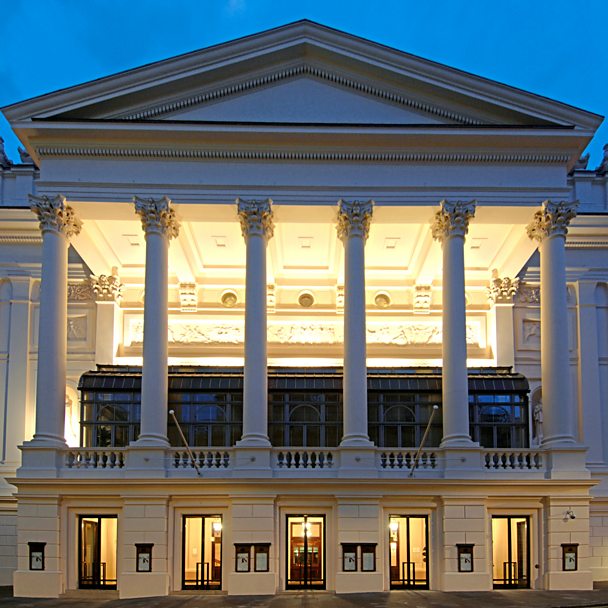
The facade, foyer and auditorium date from 1858, but almost every other element of the present complex dates from an extensive reconstruction in the 1990s. In the nearly three centuries of its history, the Royal Opera House has become one of the most modern and sophisticated-and revered-Opera houses on the European continent. From 1946, when it reopened as a performance venue after a short stint as a dance hall during World War II, it became the United Kingdom's first permanent home for opera and ballet.

It was destroyed by fire several times, and rebuilt. Its history begins with John Rich, an actor and manager at Lincoln's Inn Fields, in 1728. The current Royal Opera House is the third theater built on the Covent Garden site. The Convent Garden flower market, featured prominently in the photograph, was incorporated into the Opera House during the renovations of the 1990s. As a performing arts venue, the hall serves an important role in providing the area with the chance to experience the beauty of the arts, with the ability to enrich and renew people's lives and expand their horizons. The Royal Opera House has proven its value to London society through a long history of popular performances, destructive fires and redevelopment. What began as primarily a center for drama and plays has, over time, progressed into one of the foremost opera houses in the world. The history of the Royal Opera House has roots that reach back nearly three hundred years, to 1728, and for quite some time, was one of only two theaters in London that were licensed in presenting the spoken word in the city. The large building, which has been rebuilt twice, and is often referred to as simply "Covent Garden," is the home of The Royal Opera, The Royal Ballet, and the Orchestra of the Royal Opera House. The Royal Opera House, the United Kingdom's most important performing arts venue, is located in London's Covent Garden district. The main auditorium of the Royal Opera House.


 0 kommentar(er)
0 kommentar(er)
